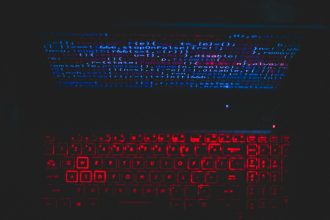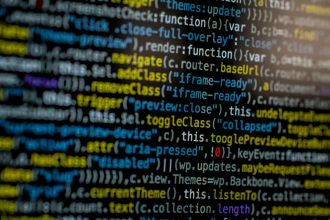Tesla Autopilot: What’s Behind the NHTSA’s Latest Scrutiny?
The world of autonomous driving is constantly evolving, promising a future where commutes are safer and more convenient. However, recent developments have cast a spotlight on Tesla’s advanced driver-assistance systems. The National Highway Traffic Safety Administration (NHTSA) has pointed to 18 complaints and one media report in which Tesla vehicles, utilizing their sophisticated self-driving software, reportedly failed to remain stopped or to stop as intended. This has triggered a new wave of scrutiny for the electric vehicle giant, raising important questions for consumers and the industry alike.
This investigation isn’t just about a few isolated incidents; it represents a critical moment in the public perception and regulatory oversight of semi-autonomous technology. As drivers increasingly rely on these systems, ensuring their safety and reliability becomes paramount. Let’s delve into what this NHTSA investigation entails, the potential implications, and what it means for the future of Tesla’s Autopilot and similar technologies.
Understanding the NHTSA Investigation into Tesla’s Software
The NHTSA’s role is to ensure the safety of motor vehicles on U.S. roads. When concerns arise about potential safety defects, the agency has the authority to investigate. In this instance, the focus is on specific instances where Tesla’s Autopilot system, which is designed to assist drivers with steering, acceleration, and braking, may not have performed as expected.
What Does “Failed to Remain Stopped or to Stop” Mean?
This phrasing suggests that in certain situations, Tesla vehicles equipped with the self-driving software did not come to a complete stop when required, or they did not maintain a stopped position when anticipated. This could manifest in various scenarios, such as:
- Rolling through a stop sign or red light.
- Failing to stop at a pedestrian crossing.
- Not stopping when approaching a stationary vehicle or obstacle.
- Resuming motion unexpectedly when the vehicle was supposed to be stationary.
These are critical functions, and any malfunction can have severe consequences. The NHTSA’s investigation aims to determine the root cause of these reported issues and assess whether they constitute a safety defect that requires a recall or other corrective action from Tesla.
The Broader Context: Tesla’s Autopilot and Public Perception
Tesla’s Autopilot system has been a major selling point for the company, lauded for its ability to reduce driver fatigue and enhance convenience on highways. However, it has also been the subject of public debate and regulatory attention for years. The company has often emphasized that Autopilot is a driver-assistance feature, requiring the driver’s full attention and readiness to take control at any moment. Despite these disclaimers, the capabilities of the system have sometimes led to confusion or over-reliance by some users.
The term “self-driving software” itself can be a point of contention. While Tesla uses this terminology, regulatory bodies and industry experts often distinguish between advanced driver-assistance systems (ADAS) and true fully autonomous driving. This investigation highlights the ongoing challenge of clearly communicating the limitations and intended use of such technologies to the public.
Previous Investigations and Safety Concerns
This is not the first time Tesla’s Autopilot system has been under the NHTSA’s microscope. In the past, the agency has investigated numerous crashes involving Tesla vehicles where Autopilot was suspected to be in use. These investigations have often focused on how the system interacts with emergency vehicles, its performance in complex traffic scenarios, and the effectiveness of driver monitoring systems designed to ensure driver engagement.
The accumulation of complaints, even if individually minor, can paint a larger picture for regulators. The fact that the NHTSA is now citing 18 specific complaints alongside a media report suggests a pattern that warrants deeper examination. This iterative process of investigation and feedback is crucial for the responsible development and deployment of advanced automotive technologies.
Potential Implications of the NHTSA’s Findings
The outcome of this investigation could have significant repercussions for Tesla and the broader automotive industry. Several potential scenarios could unfold:
- No Action Required: If the NHTSA concludes that the incidents were isolated, caused by user error, or not indicative of a systemic safety defect, no formal action may be taken.
- Software Updates: Tesla might be required to issue over-the-air software updates to address any identified vulnerabilities or improve the system’s performance in specific scenarios. This is a common outcome for software-related issues.
- Mandatory Recalls: In more severe cases, if a significant safety defect is identified, the NHTSA could mandate a recall of affected vehicles, requiring Tesla to implement hardware or software changes to rectify the problem.
- Changes in Marketing and Labeling: Regulatory pressure could also lead to stricter guidelines on how Tesla and other manufacturers market their driver-assistance systems, ensuring clearer communication about their capabilities and limitations.
What This Means for Tesla Drivers
For current Tesla owners, this investigation serves as a reminder to remain vigilant. It underscores the importance of:
- Understanding the System: Thoroughly familiarizing yourself with the capabilities and limitations of Autopilot and other driver-assistance features.
- Driver Engagement: Always keeping your hands on the wheel and your attention on the road, ready to take control at any moment.
- Reporting Issues: If you experience any unexpected behavior from your vehicle’s driving systems, report it to Tesla and consider filing a complaint with the NHTSA.
The ongoing dialogue between manufacturers, regulators, and consumers is vital for building trust and ensuring that advanced automotive technologies are developed and used responsibly.
The Future of Autonomous Driving Technology
Tesla’s advancements in artificial intelligence and vehicle autonomy are undeniable. However, this investigation highlights the complex journey towards widespread adoption of self-driving cars. Safety remains the absolute priority, and regulatory bodies play a crucial role in setting standards and ensuring accountability.
The automotive industry is at a crossroads. As more sophisticated driver-assistance and autonomous driving systems are introduced, the need for robust testing, transparent communication, and effective regulation will only grow. The NHTSA’s scrutiny of Tesla’s self-driving software is a significant part of this ongoing evolution, pushing the industry towards safer and more reliable solutions for everyone on the road.
For more information on vehicle safety and recalls, you can visit the official NHTSA website at NHTSA.gov. Additionally, understanding the nuances of different levels of driving automation is crucial. Resources like the SAE J3016 standard provide a standardized framework for defining these levels.







 Source: [https://www.mckinsey.com/industries/technology-media-and-telecommunications/our-insights/how-europe-can-lead-in-artificial-intelligence](https://www.mckinsey.com/industries/technology-media-and-telecommunications/our-insights/how-europe-can-lead-in-artificial-intelligence)](https://thebossmind.com/wp-content/uploads/1/2025/10/pexels-photo-8961131-330x220.jpeg)